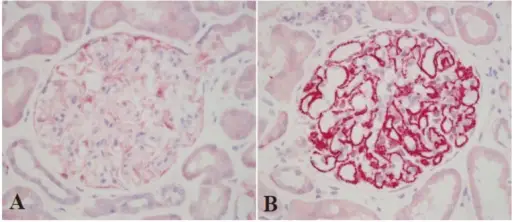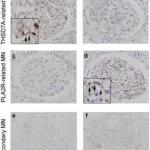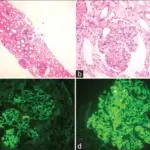Minimal change disease is a type of disease of the glomeruli that can lead to a nephrotic syndrome characterized by increased loss of protein in urine.
What is the Pathology of Minimal Change Disease?
The pathology of minimal change disease is:
-Etiology: The cause of minimal change disease is allergic reactions, tumors, viral infections, NSAIDs,
-Genes involved: Unknown.
-Pathogenesis: The sequence of events that lead to minimal change in disease is not clearly understood but some factors include autoimmune infections that lead to the damage of the podocytes of the glomerular cells.
-Morphology: Not applicable.
-Histology: The histology associated with minimal change disease shows fused foot process, protein particles.
How does Minimal Change Disease Present?
Patients with minimal change disease typically more in boys than girls in children but in adults, both male and female are affected present at the age range of 2-6 years and 40 years. The symptoms, features, and clinical findings associated with minimal change disease include proteinuria, edema, high cholesterol.
How is Minimal Change Disease Diagnosed?
Minimal change disease is diagnosed by urine tests, blood tests, glomerular filtration rate, kidney biopsy.
How is Minimal Change Disease Treated?
Minimal change disease is treated steroids in children, diuretics, limited sodium use, ACEC inhibitors.
What is the Prognosis of Minimal Change Disease?
The prognosis of minimal change disease is good with a 90% recovery to oral medication.



